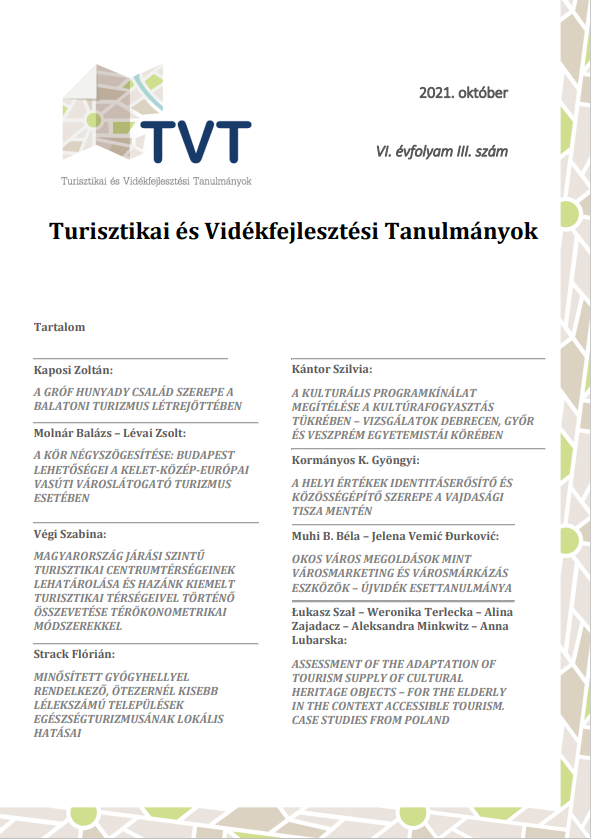A GRÓF HUNYADY CSALÁD SZEREPE A BALATONI TURIZMUS LÉTREJÖTTÉBEN
DOI:
https://doi.org/10.15170/TVT.2021.06.03.01Keywords:
Balaton, manor, tourism, Imre Hunyady, developmentAbstract
Lakeside tourism on the southern shore of Lake Balaton came to life in the 1880s. High water
levels of Lake Balaton and swamps near the lake have prohibited the growth of tourism. The
construction of the railway (1861) and the Sió flood gate (1863) gave opportunities for a step
forward. Large estate owners around the southern shores played a major role in the development
of tourism. In this study we examine the beginnings. Count Imre Hunyady, owner of the estate
of Kéthely and Balatonszemes was the first one who built a summer house in Balatonberény
and a nice park next to it. Count Hunyady played an active role in the development of Berény
and Szemes too. He subdivided the lands on the shores in order to have villas built on them. He
also had a port constructed for his own steam boat in Balatonberény and it was used as an
excursion ship to attract paying customers. He also had trees planted on the shores. As a result
of his efforts a significant resort came to life in the villages in just two decades which attracted
many entrepreneurs. Hotels, inns, restaurants and pensions were built on the shores. Most of
the customers arrived from Budapest, Marcali and Nagykanizsa. For the rural peasant
communities hosting guests was a new source of income. The development of tourism required
more supplies. Vegetable farms belonging to the Count’s estates supplied fruits and vegetables,
the butchery of the estate provided the meat and wine came from the vineries of the Count too.
A great step ahead was the foundation of civil bathing associations which managed these
settlements in the beginning of the twentieth century.


